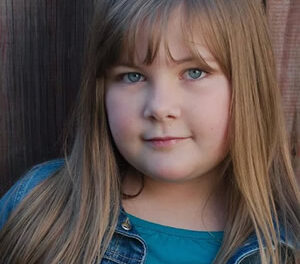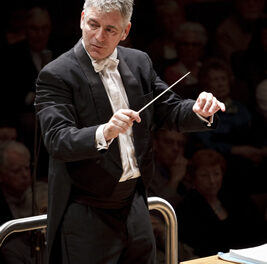Ludwig van Beethoven (1770-1827), The Complete Sonatas For Piano & Violin On Historic Instruments, Jerilyn Jorgensen, violin, Cullen Bryant, piano; Albany Records, Troy 1825-28, © 2020, TT 124:59 (58:52, 46:11, 68:47, 67:09); Available from Amazon, $49.99. (Also available from the Frederick Collection.)
The title of this CD set is not a misleading gimmick: these are real period instruments! It is unusual, however, in that five different Viennese or Viennese-style (one was made in Leipzig by a maker trained in Vienna) pianos are used, all from the Frederick Collection in Ashburnham, MA, according to the date of composition of the works. I had the pleasure of also hearing the live performances there the day(s) before they were recorded, by Christopher Greenleaf, a world-renowned recording artist/technician. Beethoven himself had several different makes of pianos over the years, and played several others as well – he often complained about them from time to time, especially once he began to lose his hearing. Several of his instruments were Viennese, including a Stein – Augsburg – Mozart knew him and had one if his instruments. The shop later became Streicher, when Andreas’ daughter, Nanette, took it over, moved it to Vienna, married, and used her husband’s surname for it. Beethoven had one of those, as well as a Walter, a Fritz, and a Graf. He also had a French Érard and an English Broadwood, both of which he had less difficulty hearing, but they were not always praised either. Here’s a link to an article about them, by Chris Maene, a collector, expert restorer, and builder in Belgium.
The first nine sonatas for piano with violin obbligato were composed between 1797 and 1803, with a nine-year gap between those and the tenth in 1812, spanning a decade and a half. In comparison, the 32 piano solo sonatas were composed between 1795 and 1822, over two and a half decades (Paul Badura-Skoda produced a CD set of those using seven instruments, mostly from his personal collection, in 1979-1990, reissued in 2020.) The greatest changes, differences, and advances occur in the last two works: Op. 96, and Op. 47 (1802-03), known as the “Kreutzer” (composed after his summer in Heiligenstadt, when he realized his hearing loss could not be stopped, and became quite depressed in his ‘Testament’ from there.) The physical presentation of this set is plain and simple, as are most of Albany Records’ products; the splash in this case is the music itself. The performances offer less splashiness, just consistently exquisite and fine musicianship; Beethoven’s more bombastic music came later.
There is nothing perfunctory, however, about the 20-page (including both covers, as now seems to be standard) accompanying booklet. It is a jewel for its content: every section is written by an expert on its subject. Dr. David B. Levy, Professor of Music at Wake Forest University in Winston-Salem, wrote the longest section about the music itself, describing each of the ten sonatas and connecting it with Beethoven’s other works, chamber and orchestral, mentioning inter-connections of characteristics, styles, and themes. It is well written, easy to follow and understand. The section about the pianos, written by their curator and restorer, E. Michael Frederick, who knows them better than anyone, includes a photo of each, except for the c.1828-32 Bösendorfer (perhaps the 1st ever built, certainly the oldest one remaining; you can see and read the details of every instrument in the Collection on its website. Writing on the violin and the bows is by Stefan Hersh, of Chicago’s Roosevelt University, and founder of Darnton & Hersh Fine Violins, also in Chicago; he recorded the ten sonatas with his father Paul in 2002, but I have not located a copy of the set. Overall, the program notes are scholarly expertise written for the layman. The biographies will give you what you need to know about the musicians, even if their names are not familiar to you; you don’t have to just take my word for their outstanding music-making. Perhaps some of you caught them when they toured in NC in the fall of 2019, so you already know.
I own two other recordings of Beethoven’s complete sonatas, both performances on period instruments. One was recorded at the Frederick Collection by Christopher Greenleaf in 2009-10 by the sister-and-brother Orfeo Duo, Vita and Ishmael Wallace, on the c. 1805-1810 Caspar Katholnig, and issued in “unedited complete takes” – a daring risk! Its three-page booklet notes by the duo are good, very brief, but with information not in those in this set (also available from the Frederick Collection). The other album’s program notes, not sequenced in composition order (as both other sets are), begins with sonatas 24 and 23, then mixes the others up, losing all sense of development, growth, and progression. However, it is performed by world-famous musicians: Jaap Schroeder and Jos van Immerseel, on an 1824 Graf in Antwerp, Belgium, recorded in 1986-87. Released in 2010 by SONY, its notes by Lorenz Welker are in their own order that corresponds neither to chronological or performance order, and are not very interesting. The English translation has grammatical errors, so they are the weakest of the three; also, Schroeder merits a bio, but Immerseel does not! Both performances are fine, the Orfeo Duo’s lovely even, but the Graf, beautiful as it is, and as much as I love its sound and tone, seems a bit too powerful for the earlier sonatas, and the strange ordering compromises the whole. Neither offers the variety and specificity of the matching of the instrument to the works that Albany Records’ does; I re-listened to both to verify it wasn’t just my imagination or faulty memory! Note that the violin, also Viennese, by Andrea Carolus Leeb, 1797, does not change, but the bow does, with 4 different ones used. I’m glad I have all three albums, but the Schroeder-Immerseel lends itself better to sampling than to a traversal listening!
The piano changed, developed, diversified, expanded, grew, and improved technologically, dramatically and rapidly during the c. 30 years of Beethoven’s productive life, perhaps the most in comparison with any equivalent period in its history after its birth in Florence c. 1700 with its creation by Bartolomeo Christofori (1655-1731). The number of artisan craftsmen making them in that period, particularly in Vienna where Beethoven lived, was the greatest in its history, as well. There have been subsequent great leaps in technical features, in particular with the creation of the one-piece cast-iron frame by Alpheus Babcock in Boston, patented in 1825, although it wasn’t in production until Chickering began putting them in his instruments there, c. 1843 (10 years before Steinway went into business, so contrary to that company’s claim, Henry did not ‘invent’ it). But some of the more recent thrusts for power, uniformity, and increased volume have eliminated some of the best features of those early 19th century instruments in the diversity and variety amongst the registers equivalent to the vocal range that resulted in a loss of expression and musicality.
The Fredericks have built their collection with the goal of being a good representation of this diversity to demonstrate its value. This set displays this variety better than any other of which I am aware. The advantage of such a set is that you can hear what was in the composer’s mind and ears when s/he was conceiving and creating the music. In Beethoven’s case, after c. 1805 the Katholnig’s was likely the last sound that he could hear at all, and since it was in the Esterhazy palace at Eisenstadt when he visited there in 1807 to conduct a concert, he may have heard it a bit, otherwise it was only in his mind. We are also fortunate that there are still artisan craftsmen such as Rodney Regier, Paul McNulty, and Chris Maene, who work to make instruments like those of that period. They produce a sound, an understanding, and a pleasure the modern ones cannot deliver. Even if you have a favorite set performed by favorite artists on modern instruments, you deserve to hear this one – it’s unique, and extraordinarily good.
P.S., October 26, 2021 (my 80th b’day).
I recently learned of a similar 3 CD set of Beethoven’s piano concertos; my copy arrived in yesterday’s mail:
Beethoven; The Six Piano Concertos, Gottlieb Wallisch, fortepianos: Conrad Graf, 1818, Graf, 1823-24, & Franz Bayer, c. 1825, cpo 555 329-2, © 2017, TT: 201:05 (68:35, 69:27, 72:03); $33.99, Available from Arkiv Musik.
The 6th concerto is the composer’s own transcription of his violin concerto. The 1818 Graf belonged to Beethoven, so he played it, although it is questionable how much he actually heard, and is now in the collection of the Beethoven Haus in Bonn; it is used for #’s1 in C, op. 15, and # 2 in B–flat, Op. 19, and the Rondo in B–flat (the original final movement of Op. 19), WoO 6 that fills out CD 1. The 1823-24, in the collection of Gert Hecher in Vienna, is used for #’s 3 in c, Op. 37, and # 4 in G, Op. 58; and the Bayer, also in Hecher’s collection, is used in # 5 in E-flat, Op. 73, and # 6 in D, Op. 61a. Wallisch is a Vienna native; he wrote the excellent introductory note in the accompanying booklet; Hecher wrote the details about the instruments and the “Beethoven’s Piano World” one; together they say some of the same things I wrote above about the development of the instrument in Beethoven’s lifetime. The notes about the individual works are by Dr. Julia Ronge of the Beethoven Haus, Dr. Hans-Werner Küthen of the G. Henle Publishing house, and Martin Haselböck, the conductor of the Orchester Wiener Akademie (= Vienna Academy [period-instrument] Orchestra, founded by him in 1985. All are authorative, thorough, but succinct, and outstanding.
My other period-instrument set is by Netherlands Arthur Schoonderwoerd, pianist and conductor, with Ensemble Cristofori, on the Alpha (Paris) label (820), © 2008, that also includes # 6, but uses a Johann Fritz (Vienna, c. 1827-10) for #’s 4, 5, & 6, and a 1996 replica by Paul Poletti & Gérard Truinman of a c. 1800 Anton Walter, for #’s 1, 2, & 3. Modern instrument sets (of which I own a few) rarely include # 6. Although I like the Schoonderwoerd set very much (I have several other CDs played by him), the Wallisch (by whom I also have other recordings) set gets the crown for these in my rating.













